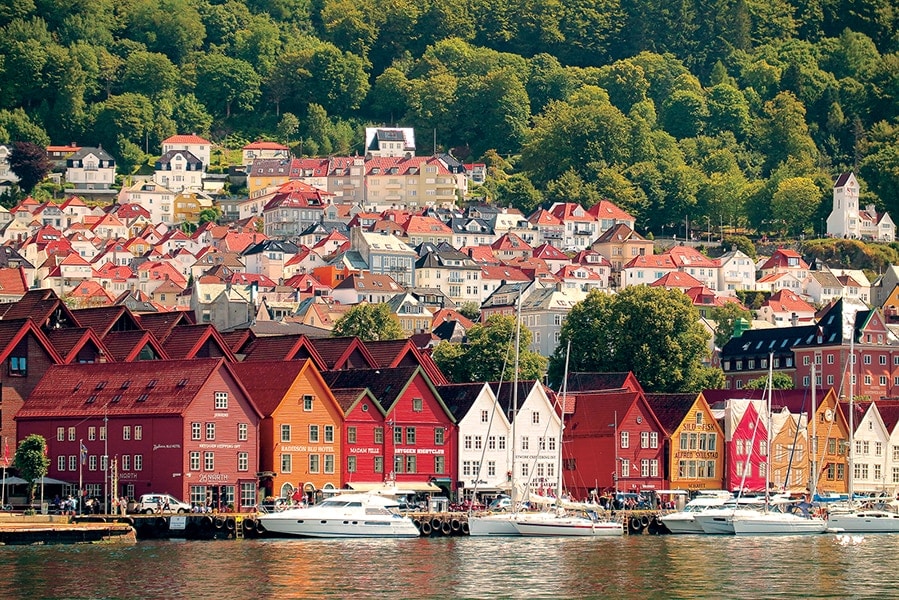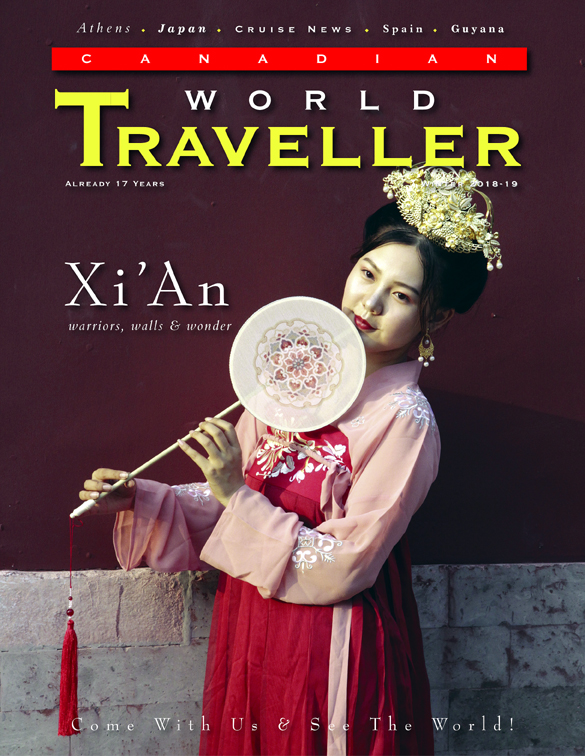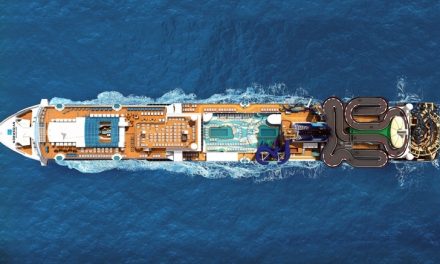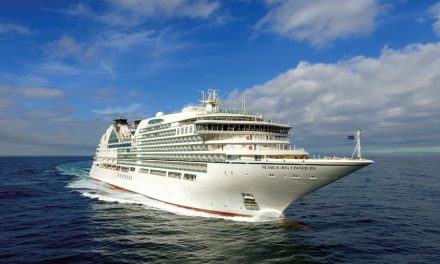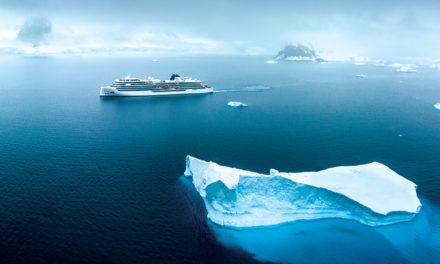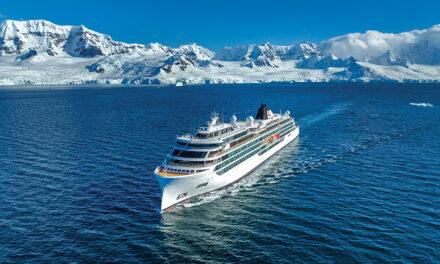Cruise
On Top of the World with Viking
Article and photography by Michael Morcos

In this part two of our wonderful Viking cruise, we set sail. Heading straight north from our base in Bergen, we hugged the coast to the European lands-end in Honningsvåg, Norway. From this land of the midnight sun we navigate our way south to the mystical land known as the Shetland and Orkney Islands just before we end our journey in London.
This memorable cruise would be fascinating, educational, relaxing and with calm seas, totally enjoyable thanks to the great efforts of the Viking management and crew. It is a cruise where everything works as it should. The Viking Sea was beautiful, luxurious and comfortable, and the service was impeccable.
On land, we would participate in all the Viking shore excursions. There was one included in every port of call and they were well planned, easy going, lots of fun and a great way to meet other like-minded Viking guests to say the least.
Knowledgeable local guides brought the different destinations to life and you can be sure that they covered the most important attractions and topics. So easy were these outings that the only stress was keeping an eye on time and getting to the luxury coaches for scheduled departures.
A note about booking these optional excursions: some of the more popular tours fill up fast and priority is given to guests with a category of Deluxe Veranda suite or higher. It is for this reason that once you are confirmed as a guest, reservations for tours should be done right away on their well-designed and user friendly login guest website.
Besides the included excursions, Viking offered a host of optional outings. At a small cost, guests had at their disposal the best of the best at the tip of their fingers including historical tours, gastronomical tours, cultural encounters with locals, fishing trips, biking and hiking through mountains, right up to the most extravagant – private planes to view the surrounding landscape.
Beautiful Bergen
Jet-lag was not enough to deter us from discovering this little Norwegian jewel. As Norway’s second largest city, Bergen is a popular tourist destination and there are many reasons why. It is charming, clean, and friendly, and has some of the best looking historical architecture we would see on our cruise through the north. The iconic view of the historic Bryggen wharf is a site to behold. For years I have seen colorful pictures of this and finally had the chance to visit this district and its many small alleyways.
Geiranger and the Fjords
Our first day and our first port of call would be a highlight of our trip, and getting to Geiranger was as fantastic as being there. We would pass through what would be the best Fjords of our cruise and on this foggy day the landscape was perfectly mysterious with towering cliffs and breathtaking waterfalls.
Here we opted for an extra excursion that included an adventure that brought us up through snaking roads to a farm on a plateau. Getting there was made easier with the aid of electronic bicycles and although you still had to make a big effort, it was nothing compared to a regular bike. Geiranger is an outdoors persons dream, there were numerous hiking trails, or kayaking the fjords options and anywhere you go it was like being in a postcard.
Molde
In Molde we would have yet another amazing day, this time we would kayak the sea with a professional outdoorsman. That is right, our young guide was actually studying to be just that, going to school and soon to graduate which made me wonder but then again this is Norway and most of its citizens have a close connection to the land.
Our Kayaking was in contrast to our visit to a newly constructed heritage village. Wooden buildings were brought in from numerous Norwegian places and with the addition of craftsmen from the many ages and characters in period clothing, this was a great look at how the people lived and survived in what could be a harsh land.
Tromso and Lofoten
In Tromso and Lofoten we would enjoy quite village life and we thoroughly enjoyed the relaxed and unhurried ways of the locals. The scenery, as always, was picture perfect. This was evident in the hills, harbors and the beautiful beaches.
Much of the economic activity here is based on the sea: in ocean fishing, fish farming, sea transport and know to a smaller degree, tourism from the Norwegians themselves and from foreigners.
NordCapp
The name says it all; this is the northern most land point in Europe. It is a cold, barren land but somehow there is life here, as in the hills we would see many herds of reindeer. On this leg we would drive from the harbor in Honningsvåg to the welcome center of Nord Capp and along the way we would meet up with the Sami, a group of hardy people that inhabit the furthest parts of Norway, Sweden and Finland. The Sami are nomadic and on his day they would bring their reindeer, set up tents and demonstrate their ways of life.
Norcapp hall, or Nordkapphallen, was initially built in 1959, and parts of the building were placed inside the mountain plateau, including the cinema and a huge grotto. Today, the building center is able to accommodate several thousand guests. NordCapp is also home to a large globe that marks that visitors are at the northernmost tip of the European continental mainland.
The Scottish Islands
Next, we visited a couple of special islands. Shetland, also called the Shetland Islands, lies 168 km from the Scottish mainland. The capital, Lerwick, bears evidence of human settlement dating back 3,000 years, but was officially founded in the 17th century as a herring and white fish seaport to trade with the Dutch fishing fleet. Today, Lerwick is a busy fishing and ferry port with a harbour that also services vessels from the offshore oil industry.
The Shetland Islands are also famous for their breeding of certain animals. Most famous are the Shetland Pony and Shetland Sheepdog .
The Orkney Islands can trace their history far back as well. Artifacts found have been dated to 6820–6660 BC that point to the presence of Mesolithic nomadic tribes. Now, it is home to the renowned Highland Park whiskey distillery. Founded in 1798, Highland Park is one of the few distilleries to malt some part of the barley it uses, blending locally Hobbister Moor peat with heather before using it as fuel. Their recipe is a winning one, and the whiskey is fantastic.
The island is also home to the Ring of Brodgar, a Neolithic stone circle which is part of the UNESCO World Heritage Site known as the Heart of Neolithic Orkney.
Ongoing excavations by Orkney College have also uncovered several buildings, both ritual and domestic. It is amazing to view these treasures of the past in person – how did they build them back then?
Edinburgh
For a great view into Scotland’s past and present, the Royal Mile offers a cobblestoned walk through time. It leads from Edinburgh Castle down to Hollyrood House with shops and boutiques lining both sides. It is an excellent way for tourists to experience the numerous bars, try the free tours based on the royal mile and enjoy the vibe of the city.
All great things come to an end
London would be our last port and it could not have been a better place to end a delightful and relaxing cruise. Our Viking Sea made it right to the heart of the city and docked in front of the Cutty Sark, two blocks from the tube and a stones throw from the Royal Observatory. This, by the way, is no easy feat. The Sea is the perfect size ship capable of sailing the Thames River and getting through the city’s flood barriers.
With much excitement, we were looking forward to wonderful London but at the same time we would have to say good-by to our new-old friend the Viking Sea. She will be in our hearts and minds as we remember the wonderful experiences and life long memories she brought us too.
www.vikingcruises.com
Click on cover to view published article

